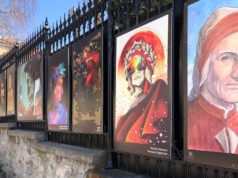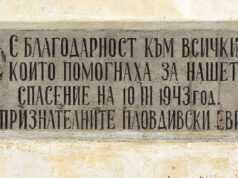 In The Fracture Zone: A Return to the Balkans, Simon Winchester frames a personal memoir against the backdrop of ethnic strife erupting in Kosovo in 1999. Confronted by a field teeming with refugees at the outbreak of the Kosovo campaign, Winchester seizes the moment to launch a journey into the heart of the region, guiding us in turn through countries and centuries in search of greater understanding of the complex relationships between ethnic groups.
In The Fracture Zone: A Return to the Balkans, Simon Winchester frames a personal memoir against the backdrop of ethnic strife erupting in Kosovo in 1999. Confronted by a field teeming with refugees at the outbreak of the Kosovo campaign, Winchester seizes the moment to launch a journey into the heart of the region, guiding us in turn through countries and centuries in search of greater understanding of the complex relationships between ethnic groups.
Like many initial observers of the Kosovo situation, Winchester reacts to the desperate plight of the Kosovar Albanian refugees with sympathy and outrage; the Serbs are portrayed as cruel instigators of violence against an innocent people. On the one hand, there can be no excuse for the many atrocities committed against defenseless civilians. On the other hand, perhaps the author could have searched deeper into local history to uncover what pressures or events would lead so many to turn so violently against their neighbors. The world would benefit from an evenhanded investigation into the very question Winchester asks, “What forces were really at work here?”
Winchester begins his journey in Vienna, the city that lay just beyond the grasp of the once mighty Ottoman Empire. Though the Austrians managed to withstand the siege of 1683, Winchester points out Turkish connections live on in Austrian society through the now ubiquitous coffee house and the everywhere popular croissant. The coffee tradition can be traced to sacks of beans left behind on the trail by retreating Turkish forces. The croissant was invented by a nameless Viennese housewife to celebrate the defeat of the Turks and their crescent flags.
From Vienna, he travels overland through the heart of the Balkan region, passing through Slovenia, Croatia, Bosnia, Albania, Montenegro, Macedonia and Bulgaria on his way to Istanbul, where so much of modern Balkan history finds its source.
Looking back, Winchester must be pleased on one score in particular. His description of little Montenegro is filled with admiration and affection, yet one encounters a sense of foreboding in the text, as if the sounds of violence approaching lay just behind the horizon in that small country. Happily the Montenegrins managed to thread their way through the next several years peacefully, separating themselves from Yugoslavia to attain an independent state.
Americans will notice a subtle condescension towards their country. Future historians might judge these rumblings a precursor of feelings widely felt but seldom voiced, which would in the not too distant future emerge in more vocal and violent ways across the world stage.
As a piece of narrative history, The Fracture Zone is an important product of its time, and an informative glimpse into the soft underbelly of a perplexing part of the world.
Buy this book:
Table of Contents
Author’s Note
1 Encounters at a Water Meadow
2 A Meeting with a Turkish Gentleman
3 To the “Land of the Osmanlees”
4 Looking for a Sarajevo Rose
5 The Fortress by the Sea
6 Western Approaches
7 The Lifting of the Gate
8 The Sound and the Fury
9 A City So Sublime
Epilogue
Glossary and Dramatis Personae
Suggestions for Further Reading
For Help Along the Way
Citation (MLA format):
Winchester, Simon. The Fracture Zone: A Return to the Balkans. New York: Harper Perennial, 2000.












